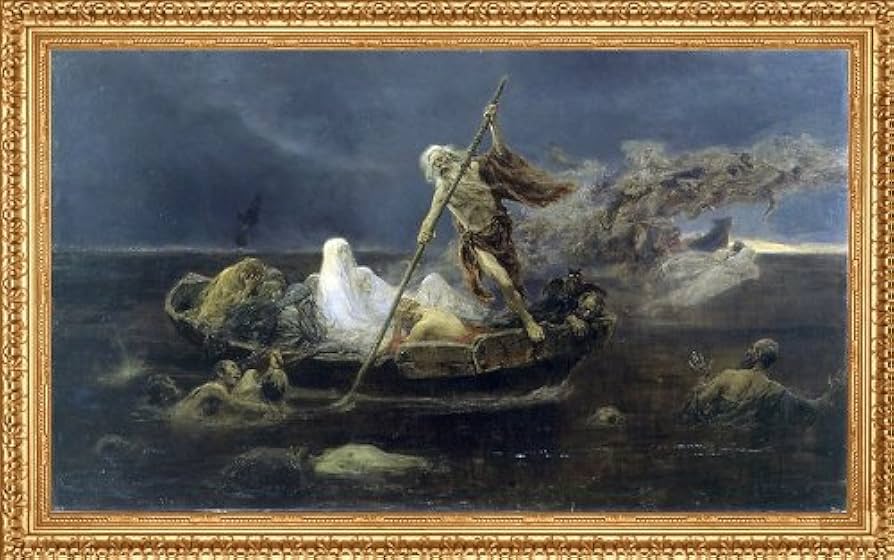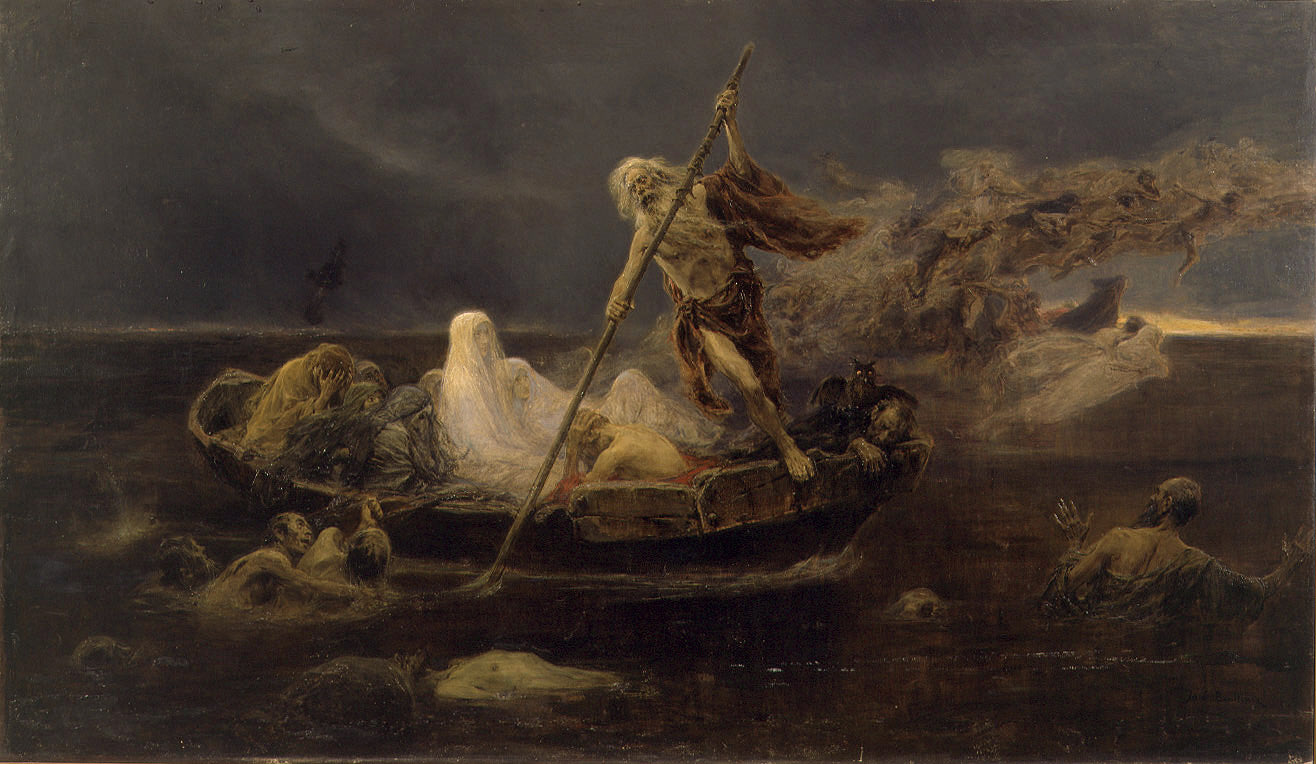Description
We often associate 19th-century academic art with historical, religious, or genre scenes. However, The Boat of Charon by José Benlliure Gil (1855–1937) immerses us in a darker and metaphysical territory: the transit between life and death. This imposing work, which hangs in the Museu de Belles Arts in Valencia, is a visceral representation of the myth of Charon, the ferryman of Hades, responsible for transporting the souls of the deceased across the river Acheron.
At first glance, the canvas is a whirlwind of drama. The scene unfolds under an ominous sky, tinted with somber grays and ochres that reinforce the atmosphere of damnation. The boat moves heavily through the dark waters, laden with souls in torment, wrapped in translucent shrouds that seem to dissolve in the air. The undisputed protagonist is Charon, a cadaverous and muscular figure, with a vacant gaze and graying hair tossed by the wind. He wields a oar that does not seem to propel the vessel but rather to dominate it as if it were an extension of his infernal will.
Benlliure Gil, known for his technical virtuosity and narrative sensitivity, resorts here to a reduced but deeply expressive palette. Dark browns, burnt ochres, and bluish blacks predominate, nuanced with glazes that suggest fog and decay. The chiaroscuro not only adds volume to the figures but also dramatizes the whole: some souls seem to glow faintly, as if they still retain a trace of humanity, while others merge with the shadows, resigned to their fate.
A fascinating detail is the inclusion of figures sinking or emerging from the waters around the boat, crying out futilely for help. These spectral presences intensify the horror of the scene and remind the viewer that not everyone makes it to the beyond; some are lost forever in oblivion. To the right, a cloud of flying figures seems to drag other souls toward the underworld, expanding the narrative space of painting beyond the physical plane.
Few know that this work has direct echoes in Dante's literature and in earlier romantic painting, especially in works like The Raft of Medusa by Géricault. However, Benlliure adds here a unique theatricality, almost operatic, with a diagonal composition that imbues the scene with movement and narrative tension. Unlike other representations of Charon, there is no possible redemption or hope at the end of the journey here. Everything is inexorable, and silence seems to envelop the scene like another shroud.
The Boat of Charon not only consolidates José Benlliure as a great visual storyteller but also unsettlingly anticipates the symbolism and expressionism that would flourish decades later. It is a painting that seeks neither to please nor to comfort; on the contrary, it confronts us with the inevitable, with that ultimate crossing that we all, sooner or later, will have to undertake.
KUADROS ©, a famous painting on your wall.
Hand-made oil painting reproductions, with the quality of professional artists and the distinctive seal of KUADROS ©.
Reproduction service from paintings with a satisfaction guarantee. If you are not completely satisfied with the replica of your painting, we will refund 100% of your money.


